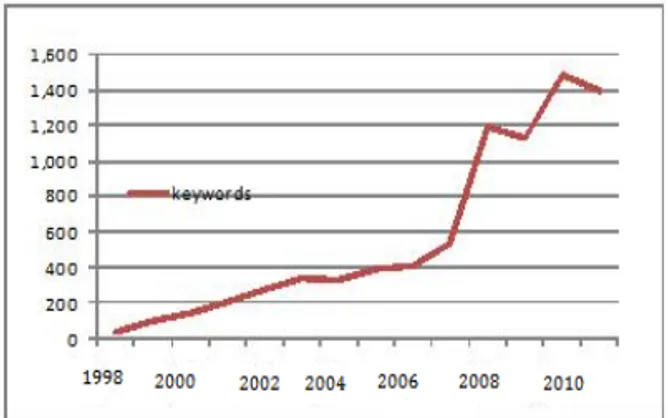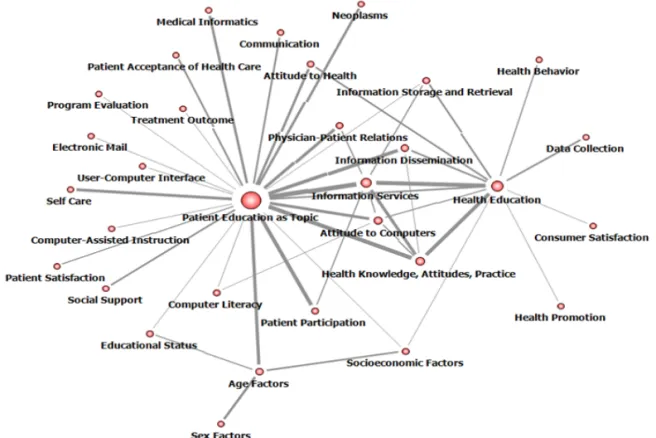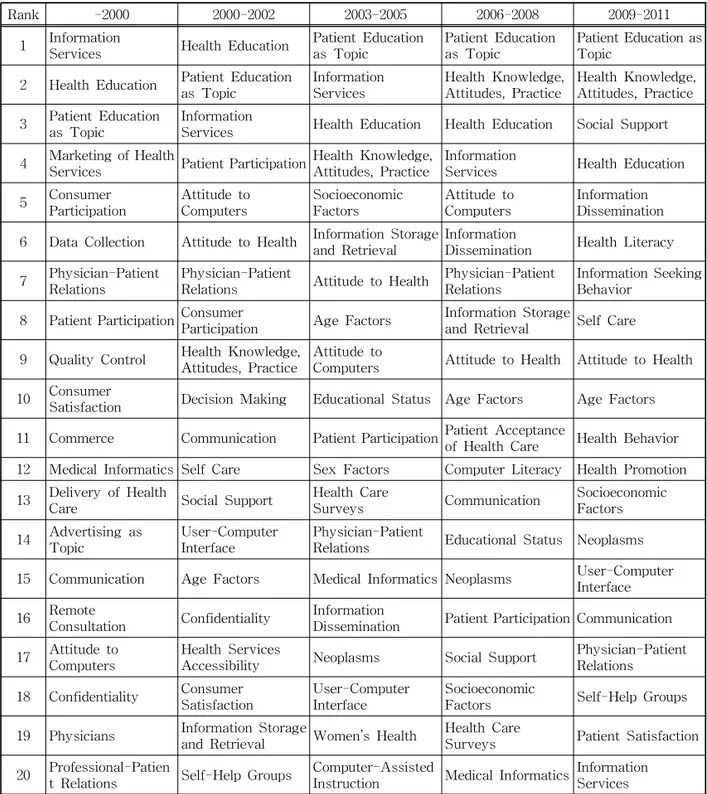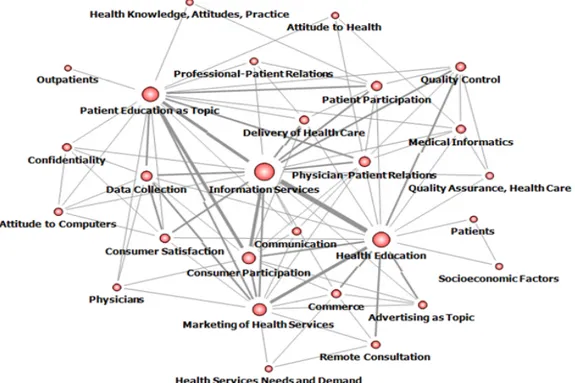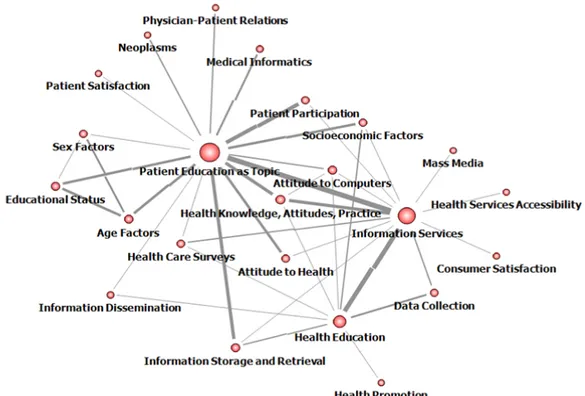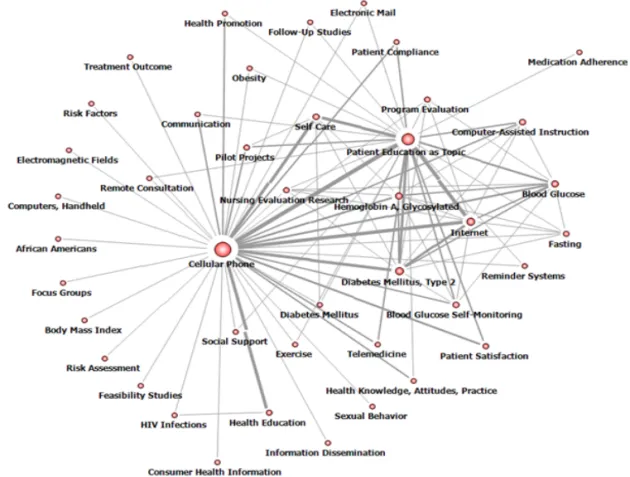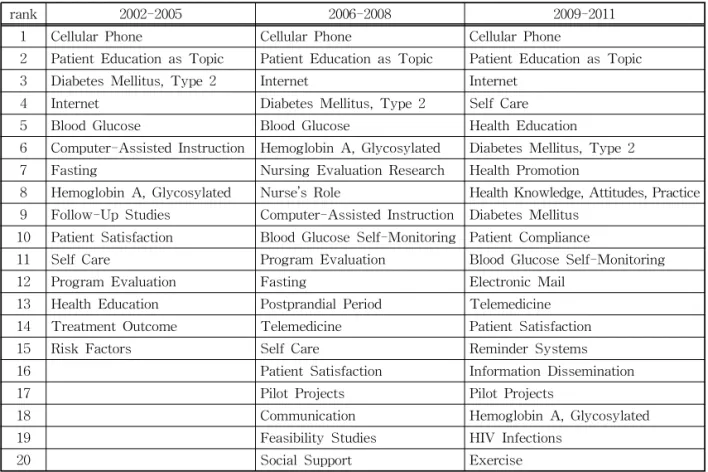Journal of Korea Multimedia Society Vol. 17, No. 8, August 2014(pp. 995-1011) http://dx.doi.org/10.9717/kmms.2014.17.8.995
Social network analysis on consumers’ seeking behavior of health information via the Internet and mobile phones
Ji-Young An
†, Haeran Jang
††, Jinkyung Paik
†††ABSTRACT
In consideration of the rapid changes in the so-called information society of the 21
stcentury, about 80% of a total population in Korea has used the Internet. However, the social effect of the Internet and related devices has not been yet systematically studied in the literature. In healthcare as well, consumers’
efficient use of the Internet for their positive health outcomes is becoming an issue. The purpose of this study was to analyze the medical subject headings keywords of the selected studies on consumers’ use of Internet and mobile health information. For the analysis, social network analysis was used to provide basic information to present directions for future research on the field of interest.
Key words: e-Health, Internet, Mobile Phone, Health Information, Social Network Analysis
※ Corresponding Author : Haeran Jang, Address: (312- 702) 5TH Floor, R&DB Foundation, 201 Daehak-ro, Chubu-myeon, Geumsan-gun, Chungnam, Korea, TEL : +82-41-750-6264, FAX : +82-41-750-6396, E-mail : hljang
@joongbu.ac.kr
Receipt date : Jul. 8, 2014, Revision date : Jul. 21, 2014 Approval date : Jul. 23, 2014
†
u-Healthcare Design & Healthcare Service Design Development Program, Design Institute, Inje University (E-mail: ajy0130@inje.ac.kr)
†††
Herbal and Health Management, Joongbu University
†††
